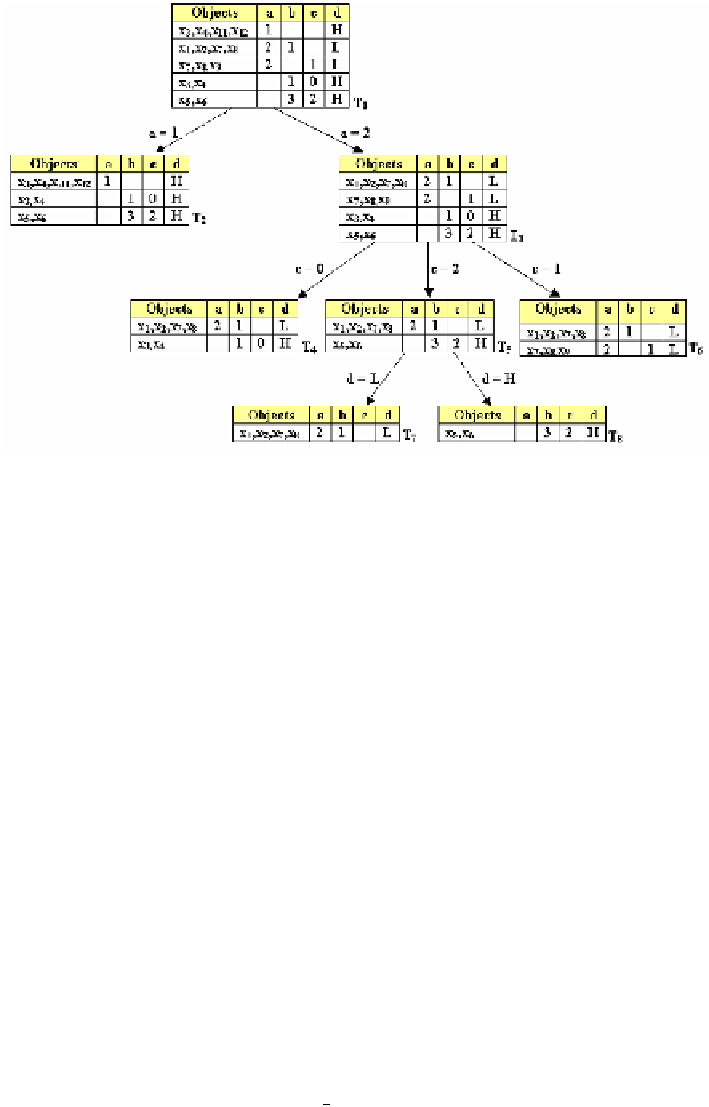Information Technology Reference
In-Depth Information
Fig. 9.1.
Action tree
can not construct E-action rule from that sub-table which means it is not divided
any further. Because rules in the sub-table
T
3
contain different decision values
and a stable attribute c,
T
3
is partitioned into three sub-tables, one with rules
containing c=0, one with rules containing c=1, and one with rules containing
c=2. Now, rules in each of the sub-tables do not contain any stable attributes.
Sub-table
T
6
is not split any further for the same reason as sub-table
T
2
.All
objects in sub-table
T
4
have the same value of flexible attribute
b
. There is no
way to form a workable strategy from this sub-table so it is not partitioned any
further. Sub-table
T
5
is divided into two new sub-tables. Each leaf represents a
set of rules, which do not contradict on stable attributes and also define decision
value
d
i
.
The path from the root of the tree to that leaf gives the description of objects
supported by these rules. Following the path labelled by value [
a
=2],[
c
=2],
and [
d
=
L
], we get table
T
7
. Following the path labelled by value [
a
=2],
[
c
=2],and[
d
=
H
], we get table
T
8
. Because
T
7
and
T
8
are sibling nodes, we
can directly compare pairs of rules belonging to these two tables and construct
one E-action rule such as:
[[(
a,
2)
∧
(
b,
1
→
3)]
⇒
(
d, L
→
H
)].
After the rule is formed, we evaluate it by checking its support and its confi-
dence (
sup
=4,
conf
= 100%).
This new algorithm (called DEAR 2.2) was implemented and tested on several
data sets from UCI Machine Learning Repository. In all cases, the action tree

